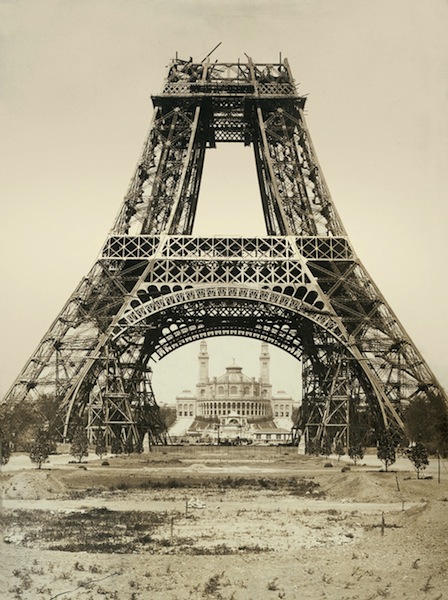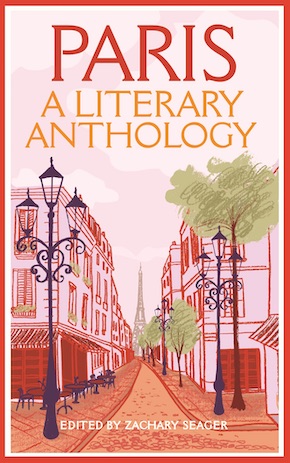Artists’ protest against the Eiffel Tower
by Ernest Meissonier, Charles Gounod et al.We – writers, painters, sculptors, and architects, passionate devotees of Paris’ beauty which, for the moment at least, remains intact – protest with all our force, with all our indignation, in the name of that belittled French taste, of that French art and history which is currently under threat, against the construction, in the very heart of our capital, of this useless, monstrous Eiffel Tower, which public hostility – so often stamped with common sense and the spirit of justice – has already christened the “Tower of Babel”.
Without descending into jingoistic enthusiasm, we have the right to loudly proclaim Paris a city without rival in the world. Over its streets and widened boulevards, along its superb river banks, amidst its magnificent walkways rise the noblest monuments yet conceived by human genius. Author of so many masterpieces, the soul of France gleams through this august efflorescence of stone. Italy, Germany, Flanders – so justly proud of their artistic heritage – possess nothing comparable to our own, and from every corner of the universe Paris draws curiosity and admiration. Should we let all this be profaned? Should the city of Paris continue to associate itself with the outlandish and mercenary fancies of some machine-builder, and thereby ruin and dishonour itself irreparably? For the Eiffel Tower – which even business-minded America itself would not want – will, without doubt, be the dishonour of Paris. All can feel it, all say it, all are profoundly distressed by it; indeed, we are only a feeble echo of this legitimately alarmed universal opinion. When foreigners arrive to visit our Exposition, they shall cry out in astonishment: “What! This is the horror that the French have dredged up to give us an idea of their famous good taste?” And they will be right to laugh at us, because the Paris of sublime gothic, of Jean Goujon, Germain Pilon, Puget, Rudge, Barye, will have become the Paris of monsieur Eiffel.
Should the city of Paris continue to associate itself with the outlandish and mercenary fancies of some machine-builder, and thereby ruin and dishonour itself irreparably?”
To better grasp our argument, one must only imagine, for an instant, a giddily ridiculous tower dominating Paris like a colossal black smokestack, crushing with its barbarous mass Notre Dame, the Sainte-Chapelle, the Saint-Jacques Tower, the Louvre, the Invalides’ dome, the Arc de Triomphe – all our monuments humiliated, all our architecture shrunken down and dissolved by this mind-boggling fantasy. And for twenty years we shall see – yawning across a city that still quivers with the genius of so many centuries – spreading like an ink stain the odious shadow of an odious column of bolted sheet metal.
It is up to you, then, dear compatriot – you who so love Paris, you who have so richly embellished it, you who have protected it so often from governmental devastation and the vandalism of industry – it is your great privilege to defend Paris once more. We trust you to plead the cause of Paris, because we know that you, sir, will expend every effort and every eloquence that can be inspired in an artist such as yourself by the love of all that is beautiful, great, and right. And if our cry of alarm is not heard, if our arguments are not heeded – if Paris obstinately persists in dishonouring itself – we, at the very least, will have offered a protest that brings honour to us all.
—
This bucolic protest against Gustave Eiffel’s tower appeared on the front page of Le Temps on 14 February 1887 at the beginning of the construction process, two full years before it was completed. The 47 named signatories included artist Ernest Meissonier, composer Charles Gounod, writers Guy de Maupassant and Alexandre Dumas fils, poets François Coppée, Leconte de Lisle and Sully Prudhomme and Paris Opéra architect Charles Garnier. The tower so outraged Maupassant that, upon its completion, he is said to have regularly dined in its restaurant – because it was the only place in Paris from which he couldn’t see the tower itself! Eiffel responded promptly, offering a vigorous and compelling defence of his audacious project, insisting that “the curves of the monument’s four iron piers, such as my calculations rendered them, will give a great impression of beauty, for they shall translate for the eye the boldness of my conception.”
Excerpted from Paris: A Literary Anthology (Macmillan Collector’s Library, paperback, £9.99), edited and introduced by Zachary Seager.
Read more
@panmacmillan



